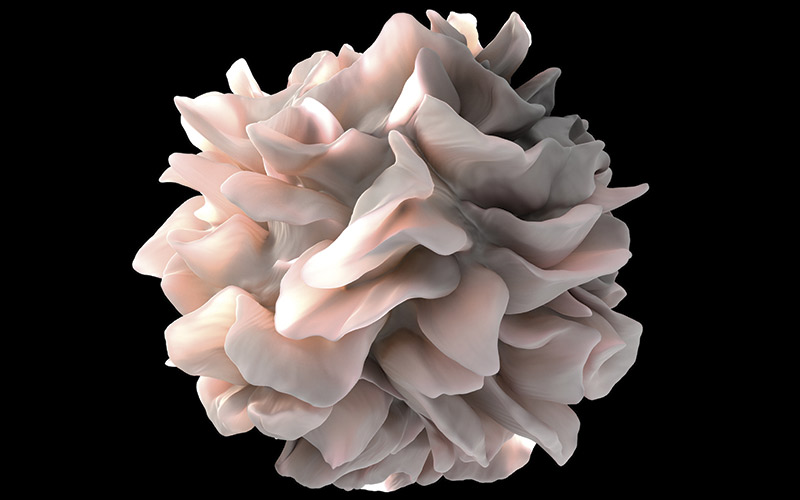The first findings of the landmark Human Cell Atlas project have been reported and reveal a major discovery.

Scientists have found four new types of white blood cells in the human immune system. They have identified two new dendritic cell subtypes and two monocyte subtypes. They have also discovered a new dendritic cell progenitor.
Dendritic cells display molecules called antigens on their surfaces. These are recognised by T cells, which then mount an immune response. Monocytes are the largest type of white blood cell and can develop into macrophages that digest debris in our cells (see box, right, for more information).
It is known that these cells play a central role in pathogen sensing, phagocytosis, and antigen presentation. However, their identities and interrelationships are not yet fully understood, as these populations have historically been defined by a combination of morphology, physical properties, localisation, functions, developmental origins, and expression of a restricted set of surface markers.
The team, led by researchers from the Massachusetts Institute of Technology, and New York and Harvard universities, used a technique called single-cell genomics to analyse gene expression patterns in individual human blood cells. Previously, different types of immune cells were investigated and defined by the set of marker proteins that they express on their surface. However, the new technique is more powerful and can reveal previously unrecognised and rare cell types that would be otherwise difficult to find.
The researchers performed single-cell RNA sequencing of ~2,400 cells isolated from healthy blood donors and enriched for HLA-DR+ lineage− cells. This profiling strategy and unbiased genomic classification was used with follow-up profiling, and functional and phenotypic characterisation of prospectively isolated subsets.
The research is funded by Wellcome and is one of the first major outputs from the Human Cell Atlas initiative – a project which aims to describe all the cell types in the human body, across all tissues and organs, to create an “atlas” of the healthy human body (see box, left, for more information). It is thought these first findings will offer a useful basis for conducting analysis on other cell types and tissues.
Divya Shah, from Wellcome, says: “In this study, scientists have used cutting-edge technologies to find that there are many more types of cell than we originally thought. The next step is to find out what each of these cell types do in our immune system, both when we’re healthy and during disease.”
The team has published a paper about their work in the journal Science. The abstract says: “Our revised taxonomy will enable more accurate functional and developmental analyses as well as immune monitoring in health and disease.” They say their breakthrough “presents a new therapeutic target readily accessible in the bloodstream for manipulation, as well as a new source for better in vitro dendritic cell generation”.
They conclude: “Although the current results focus on dendritic cells and monocytes, a similar strategy can be applied to build a comprehensive human immune cell atlas.”
Human Cell Atlas
The Human Cell Atlas is the first project of its kind and has been called as ambitious in scope as the Human Genome Project. The atlas aims to chart the types and properties of all human cells, across all tissues and organs, to build a reference map of the healthy human body.
It comprises members from many scientific institutions around the world, who are working together in the hope of achieving the ambitious goals of this project.
By making the atlas freely available to scientists all over the world, it is hoped to transform our understanding of human development and the progression of diseases such as asthma, Alzheimer’s disease and cancer.
In the future, the reference map could also point the way to new diagnostic tools and treatments.
humancellatlas.org
What are dendritic cells?
A type of antigen-presenting cell that performs an important role in the adaptive immune system.
Their main function is to present antigens. In addition, dendritic cells have the capacity to induce a primary
immune response in the inactive or resting naïve T lymphocytes.
In order to do this, they capture the antigens from invading bodies, which they process and then present on their cell surface, along with the necessary accessory or co-stimulation molecules.
What are monocytes?
The largest cells of the blood, which make up about 7% of the leukocytes. Monocytes are actively motile and phagocytic, and capable of ingesting infectious agents as well as red cells and other large particles, but they cannot replace the function of the neutrophils in the removal and destruction of bacteria.




